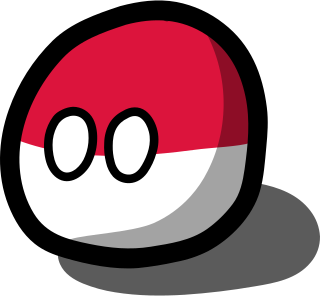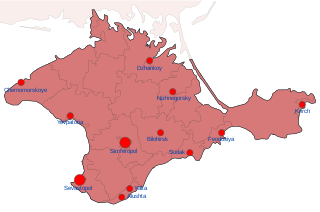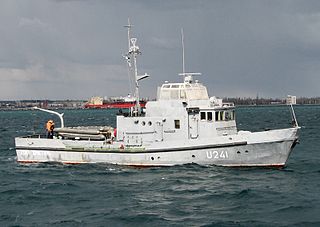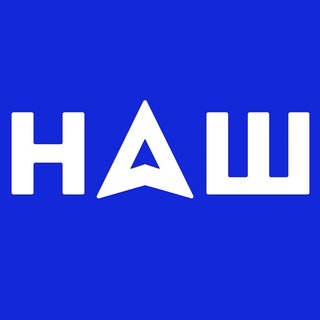
Crimea is a peninsula in Eastern Europe, on the northern coast of the Black Sea, almost entirely surrounded by the Black Sea and the smaller Sea of Azov. The Isthmus of Perekop connects the peninsula to Kherson Oblast in mainland Ukraine. To the east, the Crimean Bridge, constructed in 2018, spans the Strait of Kerch, linking the peninsula with Krasnodar Krai in Russia. The Arabat Spit, located to the northeast, is a narrow strip of land that separates the Syvash lagoons from the Sea of Azov. Across the Black Sea to the west lies Romania and to the south is Turkey. The population is 2.4 million, and the largest city is Sevastopol. The region has been under Russian occupation since 2014.

Several different governments controlled the Crimean Peninsula during the period of the Soviet Union, from the 1920s to 1991. The government of Crimea from 1921 to 1936 was the Crimean Autonomous Socialist Soviet Republic, which was an Autonomous Soviet Socialist Republic within the Russian Soviet Federative Socialist Republic (SFSR); the name was altered slightly to the Crimean Autonomous Soviet Socialist Republic from 1936 to 1945.

Staryi Krym is a small historical city and former bishopric in Kirovske (Isliam-Terek) Raion of Crimea, Ukraine. It has been occupied by Russia since 2014. It is located in the Eastern Crimean Peninsula, approximately 25 km (15 mi.) west of Theodosia. Population: 9,277 .

Sergey Vladimirovich Shnurov is a Russian musician and songwriter, best known as Shnur, of the ska-punk band Leningrad which he formed in 1997. The group disbanded between 2008 and 2010, during which time Shnur formed Rubl with other members of Leningrad.

In February and March 2014, Russia invaded the Crimean Peninsula, part of Ukraine, and then annexed it. This took place in the relative power vacuum immediately following the Revolution of Dignity. It marked the beginning of the Russo-Ukrainian War.

The Republic of Crimea is a republic of Russia, comprising most of the Crimean Peninsula, but excluding Sevastopol. Its territory corresponds to the pre-2023 territory of the Autonomous Republic of Crimea, a de jure subdivision of Ukraine. Russia occupied and annexed the peninsula in 2014, although the annexation remains internationally unrecognized.

Natalia Vladimirovna Poklonskaya is a Ukrainian-born Russian lawyer. She has served as the adviser to the Prosecutor General of Russia since 14 June 2022.

The Kerch Strait ferry line was a ferry connection across the Strait of Kerch that connected the Crimean Peninsula and Krasnodar Krai.

Countryballs, also known as Polandball, is a geopolitical satirical art style, genre, and Internet meme, predominantly used in online comics strips in which countries or political entities are personified as balls with eyes, decorated with their national flags. Comics feature the characters in various scenarios, generally poking fun at national stereotypes, international relations, and historical events, with the balls moving about by walking or jumping. Other common features in Countryball strips include non-English countries speaking in broken English — with vocabularies of their national languages included — political incorrectness, and black comedy. Strips are generally created using Microsoft Paint or more advanced graphic art software, often made to intentionally look crudely drawn.
Russian intelligentsia expressed various reactions to the Russian annexation of Crimea.
In Russia, the Word of the Year poll is carried out since 2007 by the Expert Council of the Centre for Creative Development of the Russian Language headed by Russian-American philologist Mikhail Epstein.

Yevheniy Volodymyrovych Murayev is a Ukrainian politician and media owner. He was the leader of the now-banned political party Nashi.

Ruslan Ismailovich Balbek is a Russian and former Ukrainian politician and former member of the State Duma from the United Russia party. A supporter of the annexation of Crimea by the Russian Federation, he has been highly critical of the Mejlis.

Putler, sometimes extended to Vladolf Putler, is a derogatory neologism and portmanteau formed by merging the names of Vladimir Putin and Adolf Hitler. Often used in the slogan "Putler Kaput!" by people opposed to Putin, the term has a negative connotation.

On 27 February 2014, unmarked Russian soldiers were deployed to the Crimean Peninsula in order to wrest control of it from Ukraine, starting the Russo-Ukrainian War. This military occupation, which the Ukrainian government considers to have begun on 20 February, laid the foundation for the Russian annexation of Crimea on 18 March 2014. Under Russia, the Ukrainian Autonomous Republic of Crimea was replaced by the Republic of Crimea, though the legitimacy of the latter is scarcely recognized internationally.

Hola Prystan (P241) is a Project R1415 anti-sabotage boat of the Ukrainian Navy. Built in 1986, she has been in Ukrainian Navy service since 1997.

The Krym Battalion is a Ukrainian military volunteer unit subordinated to the Ministry of Internal Affairs of Ukraine. Created in June 2014, until March 2015, it participated in anti-terrorist operations in Eastern Ukraine as part of a company of the Special Tasks Patrol Police unit Dnipro-1. The battalion is based in Kherson.

The 47th Special Purpose Regiment "Tyhr" was a special unit of the Internal Troops of Ukraine that existed from 2004 to 2014 and was stationed in Crimea. The unit performed special tasks for the protection of public order, preservation of the constitutional order, neutralization of subversive groups and counter-terrorism. It was staffed by contractors and conscripts. Its armament is composed of small arms and light artillery. The location of the unit is the village of Krasnokamianka of the Feodosia City Council. One of the battalions was stationed in Sudak. In total, the regiment included three special purpose battalions.

NASH was a pro-Russian news and political TV channel in Ukraine owned by pro-Russian politician Yevhen Murayev.

Chonhar Bridge, also transliterated from Russian as Chongar Bridge is a rail bridge and dam that traverses the Syvash. The bridge is a part of the Novooleksiivka-Dzhankoi rail line, and is a part of the M18 Highway. There is also an abandoned road bridge dozens of meters away.


















